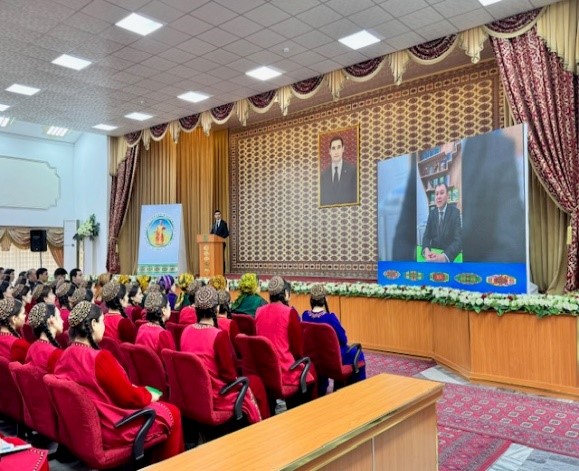In one of the dioramas of the exhibition of the Department of Nature and Local History of the State Museum of the State Cultural Centre of Turkmenistan, among the variety of reptiles, mammals, fish and birds, the fauna represents the Turanian, or Transcaucasian, also known as the Caspian tiger - an extinct subspecies of a formidable predator in Central Asia, Southern Kazakhstan, Iran and Transcaucasia, parts of northeastern Afghanistan, southern Russia, where there was also a small population before the Middle Ages, as well as the extreme east of Türkiye. The exhibit turns 70 this year. The animal, the stuffed animal of which was miraculously preserved, was of impressive size. The body length of the presented specimen is 235 cm, the tail is 105 cm. The back colour is beautiful - reddish-red with a clear pattern of black transverse stripes, the belly is white.
The Turanian tiger was the largest subspecies of the tiger, in other words, the largest cat on the planet. In the 20th century, its numbers steadily declined due to the deterioration of the food supply and the development of its hunting territory by humans. The body length of the animal could reach three meters, weight - up to 320 kilograms. The tiger subspecies that dropped out of the planet’s gene pool ceased to exist, according to various sources, by the middle of the last century. In Georgia, the last such animal was killed in 1922 near Tbilisi, in Iran the last time it was officially registered was in 1953, in Kazakhstan in 1948, although in the delta and lower reaches of the Amy derya the predator was allegedly seen in 1957 and 1968, and also in 1989 in the area of Lake Balkhash. At the same time, it is assumed that in some regions they could live until the 1990s: it is alleged that the predator was seen in the Afghan-Tajik border region as early as 1998. In our country, this subspecies was recorded in the Western Kopetdag (along Etrek to Chikishlyar; along Sumbar and Chendir), in the valleys and tugay rivers - Tejen, Murgap, Amy darya, disappeared from the sight of scientists after the last recorded case in 1954. There is a version among scientists that, according to modern molecular genetic data, the Turanian subspecies is almost identical to the Amur tiger, but questions remain about a more thorough study of this method of «reclamation» of a biological species, as well as the possibility of its full return to the nature of the Central Asian region without the factor of confrontation with humans for the territory.
The history of the appearance of the exhibit in the museum dates back to 1954, when the skin of the animal was donated to the Museum of Local History of the Academy of Sciences of the TSSR, and after appropriate processing it entered the workshops of unique products at Lomonosov Moscow University for the manufacture of stuffed animals. For this purpose, a mannequin model was used, which was a copy of an animal figure of the appropriate size in a given pose, while the skin was «put on» a ready-made rigid base. The professional work of taxidermists is amazing, because even after 70 years, the exhibit looks as if it was made recently. The tiger makes a strong impression, as if he was preparing to attack. In addition to the diorama «Amy derya» of the State Museum of the State Cultural Centre of Turkmenistan, a stuffed Turanian tiger can be seen as part of the exhibition at the Historical and Local Lore Museum of the city of Turkmenabat.
Eight subspecies are known in the world fauna - three are extinct, the remaining ones live in cramped conditions in places in the eastern regions of Russia, China, Sumatra and Southeast Asia - from Vietnam to India. They can live in different conditions - from tropical forests to taiga, as long as the forest is dense, there is fresh water and large herbivores. The tiger is considered a vulnerable species, because its hunting territories are greatly reduced, and they reproduce in nature no more than once every two to three years, bringing from one to four kittens, of which not all survive to adulthood. There are various projects and programs for the protection of the tiger; the measures taken have led to the fact that in some places the number of the animal has increased. Tigers are kept in zoos where they reproduce well. A special organization has also been created that is dedicated to explaining the consequences of tiger hunting to people who use «oriental medicine drugs».
The Department of Nature and Local History carries out educational and general cultural activities in addition to museum work in the field of eco-education, instilling in young Turkmen citizens a sense of responsibility for the fate of the living world. Using the example of the Turanian tiger and other rare animals, the state museum guides explain to visitors, especially young people, how vulnerable nature is, for which it is necessary to take care of its riches.









